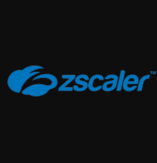Top Security Management Softwares
Security Management software offers a comprehensive approach to safeguarding an organization’s assets, data, and operations against potential threats. This software enhances security protocols by streamlining the management of security policies, incidents, and compliance requirements across various domains. It provides tools to monitor vulnerabilities, manage threat responses, and ensure data prot... Read More
150 companies found
Product Description
HIAB software is designed to simplify cybersecurity for businesses of all sizes. It offers a user-friendly platform that helps companies identify and manage potential security threats without getting bogged down in complex technological details. By using HIAB, organizations can gain a clearer understanding of their security posture, enabling them to take proactive steps to protect their data and s... Read More
Users
- • No Data
Industries
- • No Data
Market Segment
- • No Data
Cloudflare
Product Description
Cloudflare is a software service that helps improve the performance and security of websites and online services. Think of it as a helpful tool that sits between your website and the internet, ensuring that your online presence is both fast and safe. One of the main benefits of Cloudflare is its ability to speed up your website's loading time. It does this by using a network of servers located a... Read More
Users
- • No Data
Industries
- • No Data
Market Segment
- • No Data
ProofPoint
Product Description
ProofPoint is a software designed to help businesses protect their sensitive information and their employees from a wide range of online threats. It's particularly useful for companies that rely on digital communication and data storage, as it offers tools to defend against email fraud, phishing, and other cyberattacks. One of ProofPoint’s main features is its ability to stop threats before they... Read More
Users
- • No Data
Industries
- • No Data
Market Segment
- • No Data
Product Description
Tanium is a software company that provides organizations with security and management solutions for their IT environments. They focus on giving businesses clear and accurate visibility into their connected devices, such as computers and servers, all in real-time. This real-time view of your network helps you monitor and secure your IT assets with greater efficiency. With Tanium, companies can mon... Read More
Users
- • No Data
Industries
- • No Data
Market Segment
- • No Data
Product Description
Zscaler is a cloud-based security platform designed to protect businesses as they navigate the digital world. Think of it as a virtual bodyguard for your company's data and network traffic. Instead of relying on traditional hardware or on-premises solutions, Zscaler operates entirely in the cloud. This means it can continuously monitor your internet connections and ensure that everything remains s... Read More
Users
- • No Data
Industries
- • No Data
Market Segment
- • No Data
Product Description
Barracuda is a company that focuses on providing solutions to protect your data and applications in the cloud. They understand that businesses today rely heavily on cloud services and applications, and with that reliance comes the need for robust security measures. Barracuda offers a range of products designed specifically for companies using Software as a Service (SaaS). Their solutions are buil... Read More
Users
- • No Data
Industries
- • No Data
Market Segment
- • No Data
Alert Logic
Product Description
Alert Logic is a comprehensive solution designed to help businesses stay on top of their security needs. These days, companies of all sizes have to deal with a variety of online threats. Alert Logic steps in to simplify this challenge by providing key security services that are easy to use and effective. At its core, Alert Logic offers a range of tools focused on protecting your business from cyb... Read More
Users
- • No Data
Industries
- • No Data
Market Segment
- • No Data
Pulse Secure
Product Description
Pulse Secure is a reliable software solution designed to help businesses securely connect their employees, partners, and devices to their data and applications. The platform works efficiently to enable secure access to corporate resources, whether people are working remotely or on-site. With Pulse Secure, your team can confidently connect to your company's network from anywhere, using any device.... Read More
Users
- • No Data
Industries
- • No Data
Market Segment
- • No Data
Product Description
SiteLock is a comprehensive security solution designed specifically for websites. If you have a website, whether for business or personal use, keeping it secure from threats is important. SiteLock offers a straightforward and effective way to protect your site from various online risks. One key feature of SiteLock is its ability to scan your website for potential threats. This includes looking fo... Read More
Users
- • No Data
Industries
- • No Data
Market Segment
- • No Data
Netsweeper
Product Description
Netsweeper is a reliable software solution designed to help businesses and educational institutions manage and filter internet content in a straightforward way. By providing robust and customizable tools for web filtering and online safety, Netsweeper ensures that your organization can maintain a safe and productive online environment for users. Whether you're in charge of a school district looki... Read More
Users
- • No Data
Industries
- • No Data
Market Segment
- • No Data
What is Security Management software and how does it work?
Understanding Security Management Software
Security Management software is a crucial tool in the realm of information technology. This type of software acts as a protective umbrella over an organization’s data, systems, and networks. It helps businesses monitor, manage, and maintain their security infrastructure to ensure data integrity, confidentiality, and availability. By employing Security Management software, companies can mitigate risks, detect threats early, and respond swiftly to potential security incidents.
Core Functions of Security Management Software
Risk Assessment and Analysis
At the heart of Security Management software is risk assessment and analysis. The software identifies vulnerabilities within the organization’s IT infrastructure by scanning networks, systems, and applications. It assesses various risks and provides insights into potential security breaches that could occur. This proactive identification allows organizations to take preventive measures before any actual damage is done.
Threat Detection and Monitoring
Security Management software continuously monitors the digital environment to detect abnormal patterns that may indicate a security threat. Advanced algorithms and machine learning techniques play a significant role in identifying these deviations from the norm. The software provides real-time notifications and alerts, enabling organizations to react promptly to any detected threats.
Incident Response and Management
When a security incident occurs, Security Management software steps in to manage the response. It assists in logging incidents, analyzing their causes, and providing details about affected assets. This capability allows security teams to understand the impact of incidents and take corrective actions effectively.
Compliance and Reporting
In today's regulatory landscape, maintaining compliance with industry standards and regulations is imperative. Security Management software helps organizations adhere to compliance requirements by generating detailed reports and logs. These documents provide a clear audit trail, proving that security standards are met and maintained over time.
How Security Management Software Works
Integration with Existing Systems
Security Management software often integrates seamlessly with a company’s current IT ecosystem. It consolidates data from various sources, such as network devices, servers, and databases, offering a unified view of the security posture. This integration ensures that the security management process is streamlined and effective.
Automation and Policy Enforcement
Automation is a key aspect of how Security Management software works. It automatically applies security policies and procedures across the network, minimizing human error and maintaining consistent security practices. Automated updates and patches are deployed to keep systems secure against evolving threats.
Data Analytics and Machine Learning
Security Management software employs data analytics to sift through vast amounts of log data gathered from different endpoints. Machine learning algorithms enhance this process by learning from historical data to predict and preempt potential security issues. This predictive capability strengthens an organization's defense mechanisms.
Scalable and Flexible Solutions
The software is designed to be scalable and flexible, catering to organizations of all sizes. It can adjust to the changing needs of a business, ensuring that security measures are neither too lax nor excessively stringent. This adaptability ensures that the security posture evolves in line with the organization's requirements.
By effectively utilizing Security Management software, organizations can significantly fortify their defenses against cyber threats and protect valuable data assets.
Why is Security Management software important for businesses?
Risk Mitigation
Security Management software plays a crucial role in safeguarding a business's digital environment by identifying and mitigating risks. In today's digital landscape, threats to data integrity and privacy are ever-present and evolving. Businesses need robust systems to detect vulnerabilities and block unauthorized access, thus minimizing the risk of data breaches. Without Security Management software, organizations may leave themselves exposed, potentially leading to financial loss or reputational damage.
Regulatory Compliance
For many industries, compliance with legal and regulatory standards is not optional. Security Management software helps businesses align with regulations such as GDPR, HIPAA, and others that mandate stringent data protection measures. Compliance not only shields companies from legal repercussions but also enhances trust among clients and stakeholders. Implementing these solutions ensures that sensitive information is handled in accordance with prescribed guidelines, reducing the risk of penalties.
Centralized Control
Security Management software offers centralized control over security operations, allowing enterprises to monitor their security posture from a single point. This centralized management simplifies the process of enforcing policies, updating protections, and conducting audits. It provides a holistic view of the security landscape, enabling IT teams to respond swiftly to incidents and ensure continuity of operations. Centralized control also helps integrate various security tools, creating a cohesive defense mechanism.
Incident Response
Timely response to security breaches is pivotal for minimizing damage. Security Management software facilitates rapid identification and response to threats, thereby lessening their impact. With real-time alerts and automated responses, businesses can quickly address incidents before they escalate. This capability is essential for maintaining operational resilience and ensuring that normal service can resume promptly, thus reducing downtime and associated costs.
Data Protection
Protecting sensitive data is paramount for any business, and Security Management software is integral to achieving this goal. These solutions employ encryption, access controls, and monitoring tools to secure data both at rest and in transit. This ensures that sensitive information, such as customer data and intellectual property, remains protected from unauthorized access or alterations. By securing their data, companies can maintain customer trust and safeguard their competitive edge.
Threat Intelligence
Staying informed about the latest security threats is imperative for businesses. Security Management software often incorporates threat intelligence, offering insights into the latest vulnerabilities and attack vectors. By leveraging this information, organizations can proactively adjust their defenses and stay ahead of potential threats. This proactive approach is crucial for maintaining a strong security posture in the face of ever-evolving cyber threats.
Cost Efficiency
Investing in Security Management software can be cost-effective for businesses in the long run. Although there is an upfront cost, effective security management helps prevent costly data breaches and downtime. Moreover, it enhances productivity by freeing up IT resources that would otherwise be spent on manual security tasks. By automating and streamlining security processes, businesses can focus on their core activities while ensuring robust protection.
What are the key features to look for in Security Management software?
Security Management software is vital for organizations aiming to safeguard their digital assets. Its goal is to protect sensitive information and ensure compliance with various security regulations. Here are the key features to consider when selecting Security Management software:
Threat Detection and Prevention
One of the primary functions of Security Management software is to identify and mitigate potential threats. Look for software that offers real-time threat detection, virus scanning, and malware protection. Advanced systems should also include heuristic analysis, which can detect previously unknown threats based on behavior patterns.
Incident Response
Robust Security Management software provides comprehensive incident response capabilities. This includes logging incidents, tracking remediation actions, and generating detailed reports. Automated alerts for incidents can ensure a quick response, minimizing damage to your digital infrastructure.
Access Control
Access control is crucial for limiting exposure to sensitive information. The software should allow for the implementation of role-based access controls (RBAC), ensuring that users only have access to the data necessary for their role. Multi-factor authentication (MFA) is also a critical feature to look for, as it adds an additional layer of security.
Compliance Management
Compliance with industry standards and regulations is mandatory for many organizations. Security Management software should assist with compliance by providing templates, automated reporting, and audit trails. Look for software that supports standards such as GDPR, HIPAA, or PCI-DSS, depending on your industry needs.
Security Policy Management
Effective policy management features help in creating, distributing, and enforcing security policies across the organization. The software should provide templates and guidelines for creating policies, helping organizations to implement consistent security practices.
Data Encryption
To protect data from unauthorized access, Security Management software should offer robust encryption methods for both data at rest and in transit. This ensures that even if data is intercepted or accessed without authorization, it remains unreadable and secure.
Vulnerability Management
Regular scanning and updating of vulnerabilities is essential for maintaining security. Consider software that automates the vulnerability scanning process, identifies vulnerabilities in real-time, and provides actionable insights for remediation.
User Activity Monitoring
Monitoring user activity helps in detecting unusual or unauthorized actions within the system. Look for software with advanced user behavior analytics (UBA) which identifies patterns and anomalies, potentially uncovering risks before they become incidents.
Regular Updates and Support
Security Management software should be continuously updated to combat emerging threats. Frequent updates ensure that the software is equipped with the most recent security patches. Additionally, having access to responsive customer support can help quickly resolve issues and maintain security integrity.
Security Analytics and Reporting
The ability to generate in-depth analytics and reports is vital for understanding security trends and making informed decisions. Security Management software must offer customizable dashboards and visualizations to effectively communicate security posture and areas needing attention.
These features collectively form a comprehensive toolkit for managing security risks, ensuring compliance, and protecting organizational assets. With the right Security Management software, organizations can better safeguard their information and maintain secure operations.
How can Security Management software help in preventing data breaches?
Security Management software plays a crucial role in safeguarding organizational data against breaches. In today’s digital environment, data breaches can lead to significant financial losses and damage to reputation. Security Management software provides a structured framework to protect sensitive information effectively. Here’s how:
Risk Assessment and Management
Security Management software offers tools for identifying potential vulnerabilities within an organization's IT infrastructure. By conducting comprehensive risk assessments, it helps determine where the data is most at risk. This proactive approach allows organizations to implement protective measures before breaches occur.
Threat Detection
With Security Management software, businesses can leverage advanced threat detection capabilities. This software uses sophisticated algorithms to recognize unusual patterns that might suggest unauthorized access or data leaks. By identifying threats early, companies can mitigate risks promptly, reducing the probability of a breach.
Incident Response
In the event of a security incident, the software assists in coordinating an effective response. It streamlines communication across departments and provides a detailed action plan to contain the breach. Swift incident response facilitated by Security Management software minimizes data exposure and mitigates damage.
Access Control
Security Management software enforces strict access control measures. By building robust authentication protocols, it limits access to sensitive data only for authorized personnel. This is critical in preventing both external and insider threats, ensuring that confidential data remains secure.
Compliance Monitoring
Organizations must comply with various regulatory standards concerning data protection. Security Management software helps monitor and ensure compliance with these regulations. By keeping compliance in check, it reduces legal risks associated with data breaches and fosters a culture of data security.
Data Encryption
One of the key features of Security Management software is data encryption. By encrypting sensitive information, the software ensures that even if data falls into the wrong hands, it remains unreadable without the correct decryption key. This adds an extra layer of security against potential breaches.
Security Policy Enforcement
Security Management software helps in enforcing security policies across the organizational network. By automating policy deployment and monitoring compliance, it ensures that all devices and users adhere to established security protocols, thereby reducing potential entry points for breaches.
Continuous Monitoring
Continuous monitoring is an essential function provided by Security Management software. It keeps track of all network activity, looking for anything that deviates from the norm. Through continuous oversight, organizations can detect and react to security threats in real-time.
Employee Training and Awareness
Security Management software often includes modules for employee training, raising awareness about security best practices. By educating staff on recognizing potential threats and adhering to security protocols, the software helps reduce risks associated with human error, a common factor in data breaches.
Security Management software offers a suite of tools and practices geared towards protecting organizational data. Its functions span risk assessment, threat detection, incident response, and beyond, all aimed at preventing data breaches and ensuring that data remains secure.
What are the benefits of using cloud-based Security Management software?
1. Scalability
Cloud-based Security Management software offers exceptional scalability. Enterprises can adjust their resources easily to match demand without significant overhead costs. This flexibility allows businesses to expand their security measures as their operations grow, ensuring they maintain robust protections without purchasing new infrastructure constantly.
2. Cost-Effectiveness
Utilizing cloud-based Security Management software can significantly reduce both initial investments and ongoing costs. Businesses eliminate expenses related to hardware procurement, maintenance, and upgrades. Subscription models typical of cloud services enable predictable budgeting and financial planning, giving businesses greater control over their security expenditure.
3. Accessibility and Convenience
Cloud-based solutions offer heightened accessibility, enabling authorized users to access Security Management software from any location with internet availability. This feature is particularly beneficial for businesses with remote or distributed teams, as it ensures consistent security practices are maintained across all operational fronts.
4. Automatic Updates
The cloud environment ensures that Security Management software is consistently up-to-date with the latest patches and functionality enhancements. Automatic updates reduce administrative burdens and safeguard systems against emerging vulnerabilities, allowing IT teams to focus on strategic tasks without worrying about software upkeep.
5. Enhanced Collaboration
Cloud-based Security Management software facilitates better collaboration among security teams. Shared access to data and reporting tools ensures team members can work efficiently, identify threats swiftly, and craft responses collaboratively. This capability strengthens the overall security posture by fostering real-time information sharing.
6. Advanced Threat Detection
By leveraging collective data gathered from numerous sources, cloud-based Security Management software enhances threat detection capabilities. These systems often make use of machine learning to analyze patterns and identify anomalies, providing early warnings and reducing the likelihood of security breaches.
7. Business Continuity and Disaster Recovery
Cloud-based solutions offer robust disaster recovery mechanisms. In cases where local systems are compromised, data stored in the cloud remains accessible and intact. Security Management software in the cloud often includes redundancy and backup features, ensuring business continuity even in adverse conditions.
8. Integration Capabilities
The versatility of cloud-based platforms allows Security Management software to integrate smoothly with existing business applications and systems. Such integration ensures seamless data flow, giving businesses a unified view of their operational environments and strengthening overall security measures.
9. Improved Compliance Management
Security Management software hosted in the cloud can simplify regulatory compliance processes. Many providers offer built-in compliance monitoring tools that help businesses adhere to industry standards and legal requirements. Centralized data storage and management also make audits more efficient and less error-prone.
10. Enhanced Customization
Cloud-based Security Management software provides businesses with the flexibility to tailor security solutions to fit their unique needs. From custom dashboards to personalized security settings, enterprises can configure their software to meet specific requirements without the constraints typically associated with on-premise solutions.
In conclusion, adopting cloud-based Security Management software offers numerous advantages, including flexibility, cost savings, and improved threat response. These benefits help businesses bolster their security postures and navigate increasingly complex digital landscapes effectively.
How does Security Management software integrate with other IT systems?
Security Management software plays a crucial role in safeguarding an organization’s IT infrastructure. Integration with other IT systems is essential to ensure seamless operation and comprehensive protection.
Centralized Data Collection
Security Management software aggregates data from various IT systems to provide security insights. It collects logs, alerts, and security events from network devices, servers, applications, and endpoints. This centralized data collection is enabled through connectors or agents that translate information from different systems into a cohesive form.
Compatibility with SIEM Systems
Security Information and Event Management (SIEM) is key for amalgamating security data and providing actionable intelligence. Security Management software often integrates with SIEM systems to enhance security posture. By feeding security data into SIEM platforms, it facilitates real-time monitoring, correlation, and analysis of security events. This integration helps in identifying anomalies and potential threats across the IT environment.
API Access and Custom Connectors
Many Security Management software solutions offer Application Programming Interfaces (APIs) to streamline integration. APIs allow for custom connectors to be developed, enabling communication between the Security Management software and other IT systems. This approach provides flexibility to adapt to specific organizational needs and existing IT infrastructure.
Integration with Identity and Access Management (IAM)
Security Management software often integrates with Identity and Access Management systems to enforce security policies tied to user identities. This integration ensures that only authorized users have access to specific data or applications. It involves synchronizing user credentials, auditing user activity, and managing access permissions in real time.
Endpoint Security Integration
Security Management software is designed to work alongside endpoint security solutions to provide enhanced protection. It collects data from endpoint solutions to analyze threats and mitigate risks promptly. This integration allows for the automation of threat response, reducing manual intervention and potential human errors.
Network Security Systems
Integration with network security systems like firewalls, intrusion detection systems, and anti-malware tools enhances the efficiency of Security Management software. It leverages the data from these systems to provide comprehensive coverage and automate responses to detected threats. Such integration is instrumental in creating a layered defense strategy.
Cloud and SaaS Integration
In today’s digital era, cloud services and SaaS applications are commonplace, requiring robust security measures. Security Management software integrates with cloud platforms to secure data and applications. Through APIs and plugins, it extends security policies to cloud resources, ensuring data protection and compliance with regulatory standards across cloud environments.
Deployment and Configuration Management Tools
Security Management software also integrates with deployment and configuration management tools. This integration involves maintaining secure configurations and updating them in response to evolving threats or incidents. It ensures compliance with organizational security policies while minimizing vulnerabilities.
Automation and Orchestration Platforms
Automation tools and orchestration platforms are used to streamline security processes. Security Management software integrates with these platforms to automate incident response and remediation activities. It helps organizations quickly mitigate threats by orchestrating actions across various IT systems based on predefined security playbooks.
In summary, Security Management software integrates with various IT systems to enhance security measures, automate responses, and provide a unified security posture. Through centralized data collection, SIEM compatibility, API accessibility, and collaboration with other security tools, it ensures comprehensive IT security across an organization.
What is the typical cost of Security Management software for a small business?
Security Management software is essential for small businesses to protect their digital assets and sensitive information. Costs can vary based on numerous factors including the specific needs of the business, the complexity of the software, and the level of service provided. Below is a breakdown to help understand the typical cost structure for Security Management software for small businesses.
Subscription-Based Pricing
Many Security Management software solutions are offered on a subscription basis. These subscriptions are typically billed monthly or annually. For small businesses, the pricing generally starts around $10 to $50 per user per month. This cost might cover basic features such as threat detection, incident management, and compliance tools.
Tiered Pricing Models
Some providers offer tiered pricing models, which provide different levels of service at increasing price points. A basic tier might cost around $10 per user per month, while more comprehensive packages could go up to $100 or more per user per month. As you move up the tiers, additional features like advanced threat intelligence, and enhanced reporting capabilities may be included.
One-Time Licensing Fees
For some Security Management software, small businesses might encounter one-time licensing fees. This type of pricing can range from a few hundred to several thousand dollars depending on the number of licenses required and the depth of features that the software provides.
Customized Solutions
Some small businesses might require customized Security Management software. Custom solutions are tailored to meet specific needs and consequently, the pricing can vary greatly. Typically these solutions require more significant financial investment starting from $5,000 up to $50,000 or more, often depending on the customization required and the scale of deployment.
Implementation and Setup Costs
In addition to the software itself, there could be costs associated with implementation and setup. These costs might not be included in the initial pricing you see and could add between $500 to $5,000, depending on the complexity of the setup, training needs, and integration with existing systems.
Maintenance and Support Fees
Ongoing maintenance and support are crucial aspects of Security Management software. These fees might be included in a subscription, but if charged separately, they can be from $100 to $500 monthly, depending on the service level agreement. This ensures that software updates and technical support are always available to handle any issues that arise.
Additional Costs
Businesses might also consider potential extra costs such as data storage fees, additional security features, or third-party integrations. These can add anywhere from $50 to several hundred dollars monthly, depending on the specific additional services and features chosen.
In conclusion, while Security Management software is a vital investment for small businesses, understanding the various pricing structures helps in budgeting and selecting the right solution fit within the financial capabilities.









